Carbonates
Type of resources
Topics
Keywords
Contact for the resource
Provided by
Years
Formats
Representation types
Update frequencies
-
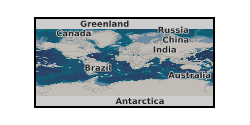
Field photographs showing sedimentology, sediment and porewater collection techniques, coastal Abu Dhabi, UAE. Collected as part of NERC Grant NE/L011050/2: Rethinking carbonate diagenesis: clues to past carbon cycling from an overlooked carbon sink.
-

The stratigraphic scope of the data is 1) the Polarisbreen Group of NE Svalbard (late Tonian to Ediacaran) and 2) top Appin and lower Argyll Groups, western Scotland (late Tonian to Cryogenian). Geochemical data on carbonates includes, in different cases, stable oxygen and carbon isotopes, strontium isotopes and trace elements. Results from Scotland are published in: Fairchild, I.J., Spencer, A.M., Ali, D.O., Anderson, R.P., Anderton, R., Boomer, I., Dove, D., Evans, J.D., Hambrey, M.J., Howe, J., Sawaki, Y., Wang, Z., Shields, G., Skelton, A. Tucker, M.E. and Zhou, Y. 2017 Tonian-Cryogenian boundary sections of Argyll, Scotland. Precambrian Research. doi: 10.1016/j.precamres.2017.09.020. An additional plot of some of the data is in: Ali, D.O., Spencer, A.M., Fairchild, I.J., Chew, K.J., Anderton, R., Levell, B.K., Hambrey, M.J., Dove, D., Le Heron, D.P. 2018. Indicators of relative completeness of the glacial record of the Port Askaig Formation, Garvellach Islands, Scotland. Precambrian Research. Doi: 10.1016/j.precamres.2017.12.005. Results from Svalbard are partly published (Elbobreen Formation, members 3 and 4; Wilsonbreen Formation) in the publications listed below. Data on Elbobreen Formation, members 1 and 2 and the Dracoisen Formation are not published at the time of writing (January 2018). Fairchild, I.J., Bonnand, P., Davies, T., Fleming, E.J., Grassineau, N., Halverson, G.P., Hambrey, M.J., McMillan, E.A., McKay, E., Parkinson, I.J. and Stevenson, C.T.E. 2016 The Late Cryogenian Warm Interval, NE Svalbard: chemostratigraphy and genesis of dolomitic shales. Precambrian Research, 281, 128-154. Fairchild, I.J., Fleming, E.J., Bao, H., Benn, D.I., Boomer, I., Dublyansky, Y.V., Halverson, G.P., Hambrey, M.J., Hendy, C., McMillan, E.A., Spötl, C., Stevenson, C.T.E. and Wynn, P.M. 2016 Continental carbonate facies of a Neoproterozoic panglaciation, NE Svalbard. Sedimentology, 63, 443-497. Benn, D.I., Le Hir, G., Bao, H., Donnadieu, Y., Dumas, C., Fleming, E.J., Hambrey, M.J., McMillan, E.A., Petronis, M.S., Ramstein, G., Stevenson, C.T.E., Wynn, P.M. and Fairchild, I.J. 2015 Orbitally forced ice sheet fluctuations at the end of the Marinoan Snowball Earth glaciation Nature Geoscience. 8, 704-707. Fleming, E.J. (2014) Magnetic, Structural and Sedimentological Analysis of Glacial Sediments: Insights from Modern, Quaternary and Neoproterozoic Environments. Unpublished PhD Thesis. University of Birmingham. Available at: http://etheses.bham.ac.uk/5136/
-
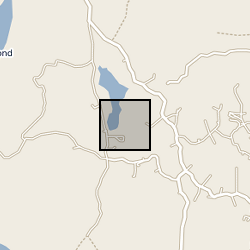
Oxygen and carbon isotope measurements from multiple-shell samples of the ostracod Cypretta brevisapta, and loss-on-ignition determinations, from Core WAGP taken from Wallywash Great Pond, Jamaica. A chronology for the core is provided by radiocarbon dates and short-lived radio-isotopes. The data provide a proxy for changing hydroclimate for the period 2000 – 200 CE.
-
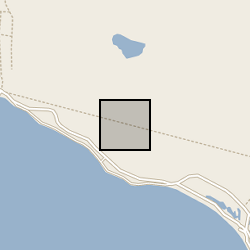
The dataset contains oxygen and carbon isotope measurements from multiple-shell samples of the ostracod Heterocypris punctata, from Core FP2 taken from Freshwater Pond, Barbuda. A chronology for the core is provided by radiocarbon dates. The data, which are further described in Burn et al. (2016) The Holocene, 26(8), 1237-47, provide a proxy for changing rainfall patterns for the period 2000-1555 CE.
-

Carbon and oxygen isotopic composition of bulk sediment carbonate spanning the early and middle Eocene succession recovered from borehole 16/28-Sb01. For description of this sedimentary sequence see Haughton et al. 2005. Petroleum Geology: North-West Europe and Global Perspectives, Proceedings of the 6th Petroleum Geology Conference, 1077–1094.
-
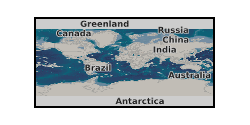
The images in this dataset are a sample of Ketton carbonate from a micro-computed tomography (micro-CT) scan acquired with a voxel resolution of 4.52 µm. This dataset is part of a study on the effects of Voxel Resolution in a study of flow in porous media. A brief overview of this study summarised from Shah et al 2015 follows. A fundamental understanding of flow in porous media at the pore-scale is necessary to be able to upscale average displacement processes from core to reservoir scale. The study of fluid flow in porous media at the pore-scale consists of two key procedures: Imaging reconstruction of three-dimensional (3D) pore space images; and modelling such as with single and two-phase flow simulations with Lattice-Boltzmann (LB) or Pore-Network (PN) Modelling. Here we analyse pore-scale results to predict petrophysical properties such as porosity, single phase permeability and multi-phase properties at different length scales. The fundamental issue is to understand the image resolution dependency of transport properties, in order to up-scale the flow physics from pore to core scale.
-
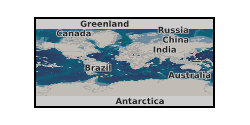
Seawater carbonate system properties and atmospheric carbon dioxide concentration reconstructions from Eocene planktonic foraminifera using boron isotope analyses.
-
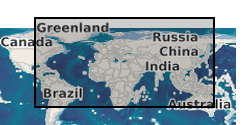
We used existing coretop samples from several sites from the Atlantic, Arctic, Pacific, and Indian Oceans (Fig. 1 and Table S1) to test the relationship between Mg/Ca ratios and D47 values in modern foraminifera. In the North Atlantic the cores were the same as those used previously by Elderfield and Ganssen (2000) (Tables S1 and S2). Coretops with the potential to yield large (>5 mg) mono-specific samples of foraminifera were selected from the >300 lm size fraction of the sediment except for Neogloboquadrina pachyderma (sinistral) where the >150 lm size fraction was chosen to obtain sufficient material. After cleaning the samples consisted of _3 mg of foraminiferal calcite and included 8 different species of surface- and deepdwelling planktonic foraminifera: Globigerina bulloides, Globigerinoides sacculifer, Globorotalia hirsuta, Globorotalia inflata, Globorotalia menardii, Neogloboquadrina dutertrei, Neogloboquadrina pachyderma (s), and Orbulina universa. The Godwin Laboratory clumped isotope calibration (i.e., the regression between D47 and temperature) was established using natural cave carbonates that precipitated subaqueously at known temperatures, ranging from 3 to 47ºC (Table 1, Fig. 2). These carbonates grew under conditions that minimize CO2-degassing and evaporation and hence kinetic fractionation effects are negligible owing to an unlimited DIC pool in the water (Kele et al., 2015). All samples consist of calcite, except NAICA-1 which is aragonite.
-
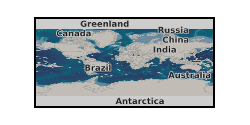
Terrestrial palaeo-environmental proxy data has been collected to examine orbital changes in wildfire activity in the Early Jurassic of the Mochras Borehole, Cardigan Bay Basin, Wales. To do this a high resolution charcoal abundance dataset was created and quantified in two size fractions, microscopic charcoal (10-125 µ) and macroscopic charcoal (>125 µ). To take potential changes in riverine influx and/or organic preservation in account on the charcoal abundance, palynofacies were analysed to document all terrestrial and marine organic particles present in the samples, and next to this, X-ray fluorescence data was gathered to assess detrital output. Mass spectrometry provided information on the carbonate and Total Organic Carbon content and bulk organic carbon isotopes. This information was used to look at changes in the lithology and the carbon cycle. Finally, clay mineralogical data was obtained to look at changes in the hydrological cycle in relation to wildfire activity. This dataset spans 951-934 mbs from the Mochras borehole, which is the time equivalent of ~350 kyr, in the Margaritatus Zone of the Upper Pliensbachian. The Mochras sediments have been deposited in the Cardigan Bay Basin, Wales. At the time of deposition, this location was positioned in the Laurasian Seaway at a paleolatitude of ~35°N. These datasets were obtained at a high resolution (10 cm) using X-ray diffraction, X-ray fluorescence, mass spectrometry and palynological preparations. This high resolution was acquired to analyse the presence of precessional orbital forcing on wildfire and the other proxy datasets. This data was collected, interpreted and analysed by Teuntje Hollaar, Claire Belcher, Stephen Hesselbo, Micha Ruhl, Jean-Franҫois Deconinck, Sarah Jane Baker and Luke Mander. The complete dataset presented in the published article file ‘Wildfire activity enhanced during phases of maximum orbital eccentricity and precessional forcing in the Early Jurassic’ has been included in this data file.
-
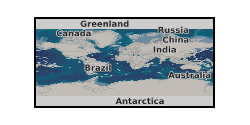
We imaged the steady-state flow of brine and decane at different fractional flows during dual injection in a micro-porous limestone using X-ray micro-tomography. We applied differential imaging on Estaillades carbonate to (a) distinguish micro-porous regions from macro-pores, and (b) determine fluid phase pore occupancy and relative permeability at a capillary number, Ca = 7.3×10-6. The sample porosity was approximately 28 %, with 7% in macro-pores and 21% in pores that could not be directly resolved (micro-porosity). We find that, in addition to brine and decane, a fraction of the macroscopic pore space contains an intermittent phase, which is occupied either by brine or oil during the hour-long scan time. Furthermore, fluid occupancy in micro-porosity was classified into three sub-phases: micro-pore space with oil, micro-pore space with brine, and micro pores partially filled with oil and brine.
 NERC Data Catalogue Service
NERC Data Catalogue Service